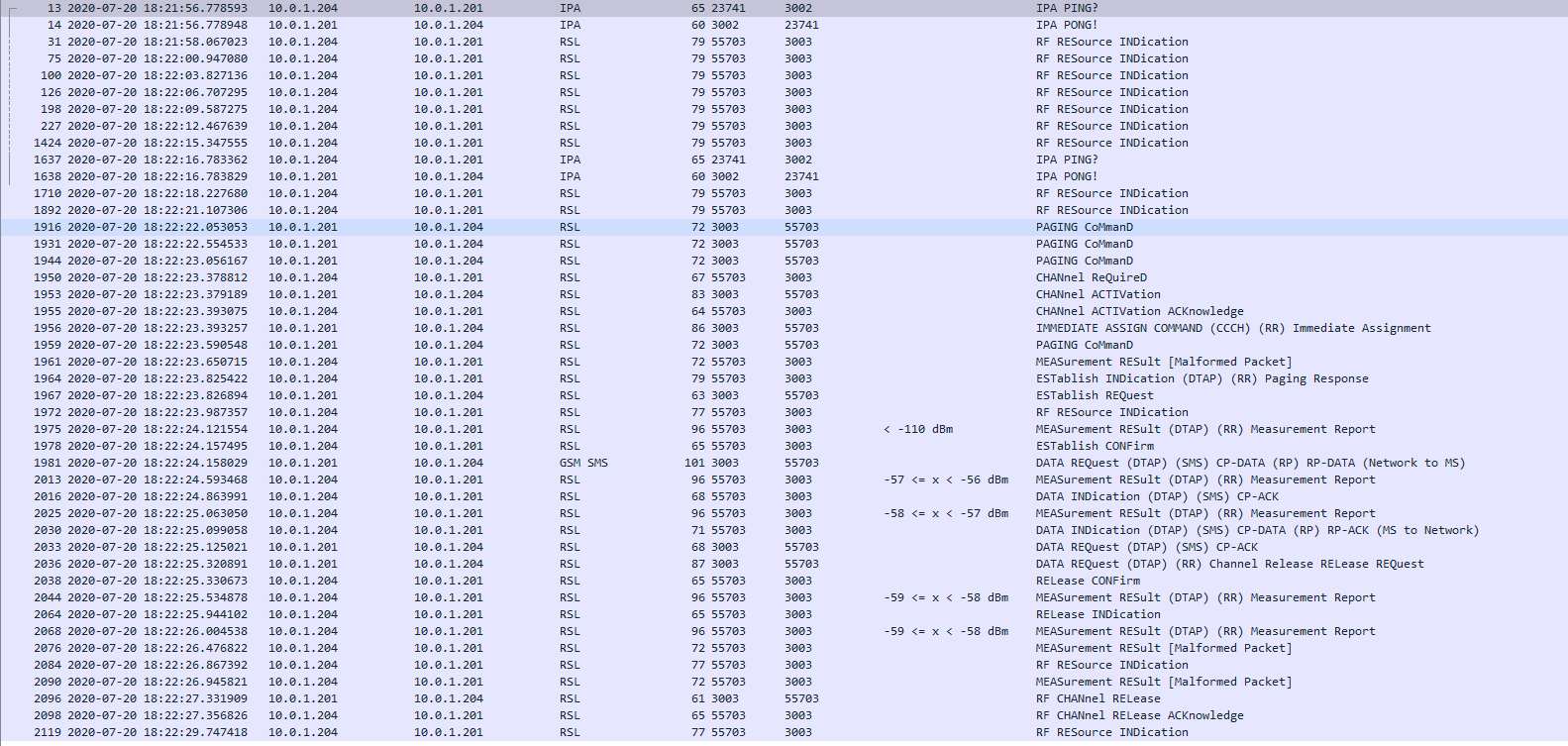Depending on if you’re wearing a tin foil hat or not, silent SMS and silent calls could be a useful tool to for administering the network or a backdoor put in to track citizenry!
Regardless of it’s reasons for existence, let’s take a look at what it actually does, and how we can use it.
To conserve battery and radio resources, terminals / UEs go into an idle state where they monitor the RSSI of the BTS/NodeB and the broadcast/paging channels, but don’t actively send anything on the uplink.
Let’s say we wanted to get the RSSI measurements from a terminal/UE we would need the terminal to go into an active state.
We could do this by calling the terminal, or sending an SMS, but if we wanted to do it without alerting the user, that’s when we can use Silent SMS and silent calls, to do so without alerting the user.
If you want to try this you can send a Silent SMS from Osmo-MSC.
OsmoMSC# subscriber msisdn 61487654321 silent-sms sender msisdn 61412341234 send Hello World

On top of Silent SMS there’s also silent calls, allowing for a continued stream of measurements from the UE, which can also be super useful for creating a single call leg.
Another use for Silent SMS it to interface with the SIM Card, many card manufacturers provide support for “over the air” updating of the SIM Card parameters (think if MNO A purchases MNO B and they want to share a network, you don’t want to have to re-issue every SIM card with the updated PLMN, just update the parameters on the SIM).
Messages from the network operator to their SIM cards don’t need to be shown to the user, so are can be carried via Silent SMS. – SIM card manufacturers don’t make the nitty gritty details of this functionality public – it’s a proprietary interface defined by the manufacturer, simply transported by SMS.
